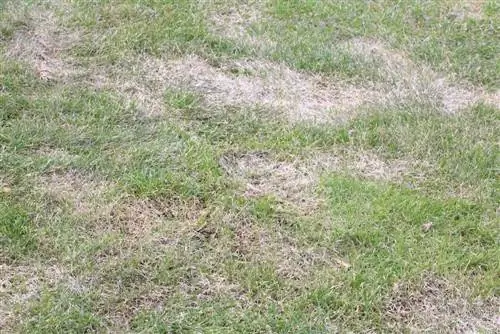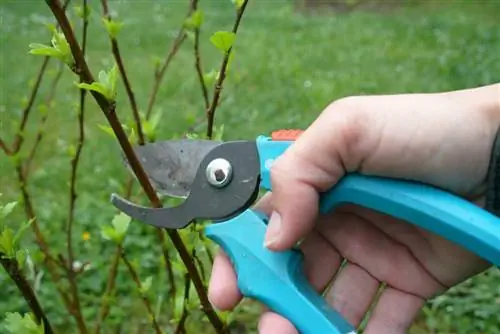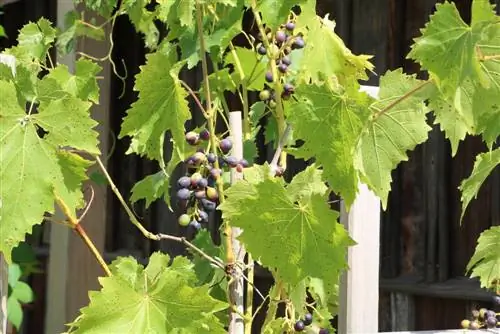- Author admin [email protected].
- Public 2023-12-17 03:39.
- Last modified 2025-01-24 12:45.
There are hardly any hedges that don't need to be trimmed. As a rule, every hedge needs to be shaped regularly. Depending on the type of plant, there may be a rule for pruning or shaping. In principle, however, the rule of thumb applies: Spring pruning should be completed in mid-March, summer pruning begins at the end of July.
Protection times for hedges
Protection times apply to all hedges. They serve to protect our local animals and extend from March 1st to September 30th of the year. During this time, only light topiary cuts may be made to a hedge. Anyone who does not comply with these protective times is committing an administrative offense that can be punished.
The right time
In principle, any hedge can be shaped all year round. However, it makes sense to find the best cutting time for the respective variety and only then cut. Then the cut will not cause any damage and the hedge will thrive. Early spring is particularly suitable for pruning. The trees have not sprouted yet and will therefore only look bare for a short time. The new shoots quickly cover the interfaces. And the birds' breeding business is not disturbed at this point. The hedge-nesting birds are not disturbed.
The day for a hedge trimming should ideally be overcast. Too much sun damages the interfaces. If you cut it before winter, the temperatures should still be in the positive range, otherwise the hedge will look bare all winter long and is not nice to look at.
If the hedge is cut around St. John's Day, which is June 24th, it often sprouts a second time. After that, peace will set in for this year. Cutting is prohibited from the end of August. The tips that are then still sprouted can no longer ripen until frost and can therefore easily freeze to death.
If the hedge definitely needs to be trimmed before winter, then autumn from mid-October to early November is the right time. The hedge plants are now already in the dormant phase. Now a cut is quite unproblematic. The prerequisite is that the ground is not frozen and there is no sun shining. Late afternoon is a good time. Then not only the plant sap has retreated from the branches into the trunk and the sun can no longer dry out the interfaces.
The exceptions
The early flowering shrubs are an exception to hedge trimming. These are only cut after flowering. A cut in February or March destroys the existing flowers and the magnificent flower is destroyed. That's why all flowering trees should only be cut after flowering.
The right hedge trimming
Hedge plants should therefore be cut regularly so that they do not become too high or too wide. The cut also encourages branching and makes the hedges nice and dense. This is particularly important for evergreen plants. There are also basics that should be taken into account every time you cut a hedge.
- Cut an evergreen hedge trapezoidally, i.e. wider at the base than at the crown. Important for a lot of light.
- Straight cut allows the lower parts of the plant to become slightly bare from the inside out.
- It is better to round right-angled corners. This also brings more light into the interior of the hedge plant.
- For a straight hedge cut you need tools such as a taut cord.
- Do not cut in the sun because the cuts burn easily.
- In snowy areas, trim the top of the hedge to a point. This prevents snow breakage.
- Wear gloves when cutting. This can protect against injuries.
Cutting leafy hedges
Deciduous hedges can usually be cut back heavily. They sprout reliably even from old wood. The cut is made from top to bottom. Always check the overall picture. A horizontally stretched cord can also be a good help here. Here too, the top should be cut narrower than the bottom.
Cutting needle hedges
Coniferous hedges do not forgive cutting errors. That's why it's important to stick to the trapezoid shape right from the start. If the plants go bald, the damage can hardly be corrected. In a thuja or false cypress, it takes years for holes that have formed to grow back over. Such damage to conifers is irreparable. Coniferous hedges are only cut for the first time a year after planting. They need rest to grow. From the second year onwards, pruning must be carried out regularly, even if the desired height has not yet been reached. Since arborvitae are poisonous, allergic reactions can occur upon skin contact.
Tip:
Long-sleeved clothing and gloves protect against skin contact.
Pruning evergreen hedges
Evergreen hedges such as boxwood, loquat or laurel cherry should not be trimmed with electric hedge trimmers. Too many leaves are injured. Pathogens penetrate through the resulting wounds and everything looks very unsightly. Cutting with pruning shears is more work, but it is better for the he alth of the plants and the result looks much nicer.
If the main shoots of evergreen conifers are 20 to 30 cm higher than the desired height of the hedge, they are cut 15 cm above the crown height. Sufficient shoots can form to overgrow the cut surfaces.
Cutting tools
There are many tools available for hedge trimming. When choosing, sharp blades, powerful pruning shears and good saws are important. Telescopic tools are ideal because they eliminate the need for a ladder. Cordless devices make you independent of a power connection. Provided the battery lasts a long time, working with it is just fun.
What you need to know about hedge cutting in brief
Cutting a hedge is generally not really difficult. Depending on the length of a hedge, it can be really tiring. That's why keeping regular cutting appointments and having sharp tools is a real help. Free-growing hedges require no pruning, but require a lot of space. In a normal garden there is hardly any space left.
- Hedge trimming should take place in spring and early summer, i.e. in May and June, before the bushes sprout.
- The second cut should then take place in the second half from August to October.
- If you have planted a hedge that has foliage, it can also be trimmed in winter.
- Normally one cut per year is enough, but the hedge will become denser if it is cut more often.
Which shape you choose for your hedge is up to your creativity. However, you should note that the shape needs to be wider at the bottom than at the top. Otherwise the trunk could become bald, which doesn't look nice. Another little tip: If you want a straight line but don't feel confident doing it freehand, just stretch a line so you always have a good reference point.






